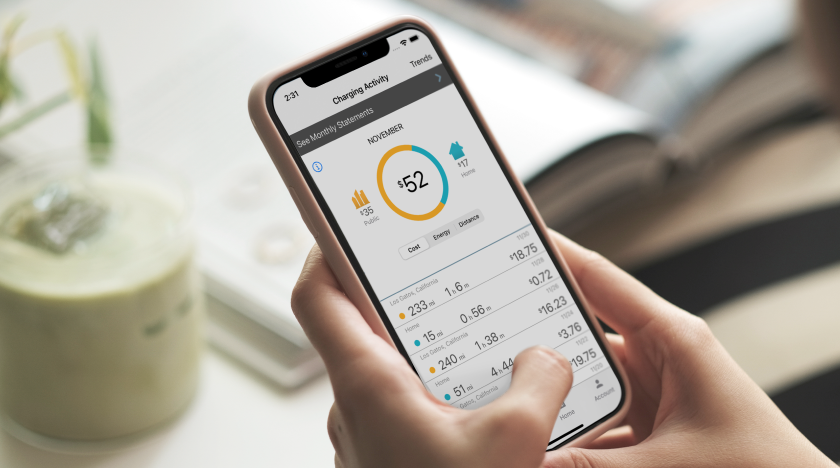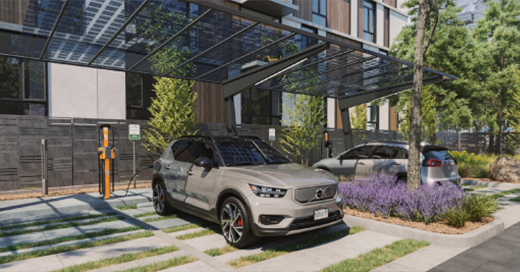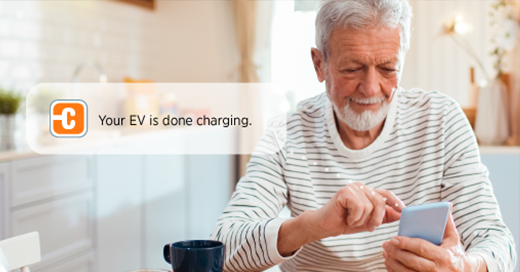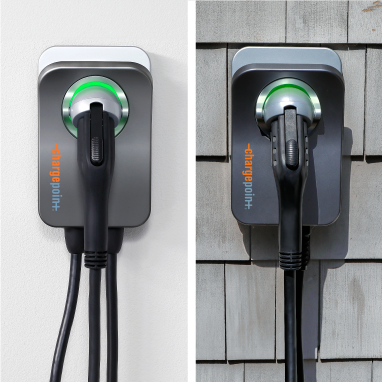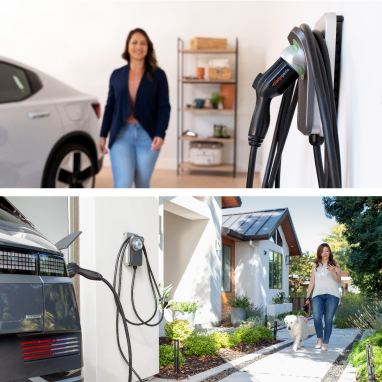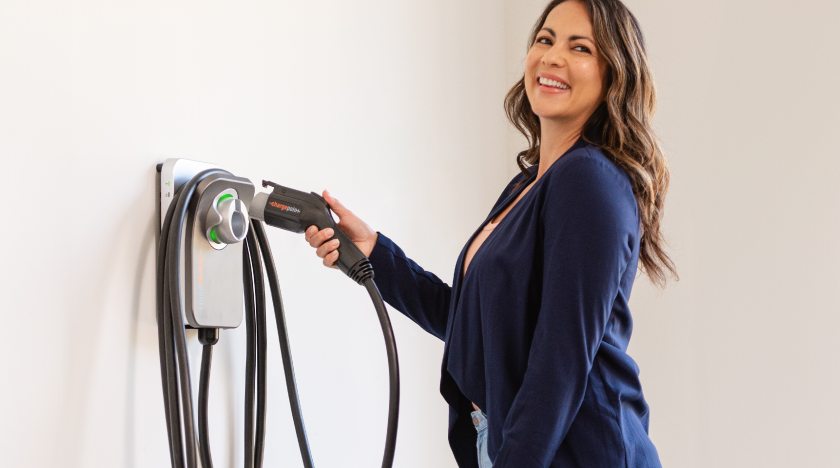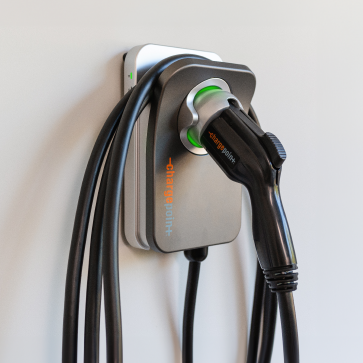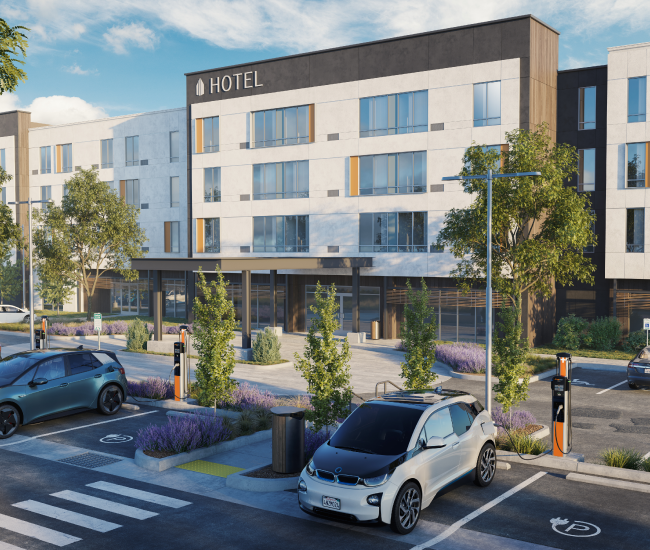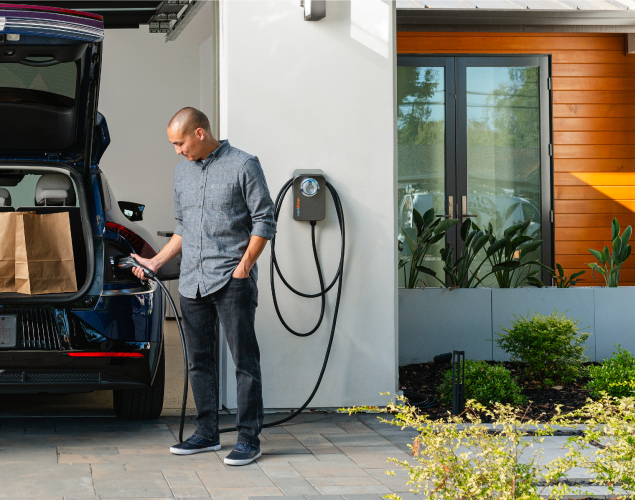
Charging at home
Learn how to charge an EV wherever you live. Whether you live in a house, condo or apartment, this guide will help get you started.
Home EV charging 101
Get to know your home EV charging basics and benefits.
EV charging for apartments and condos
Discover how to charge your EV at your condo or apartment.
Buying a home EV charger
Learn the essentials before buying a home EV charger.
CHARGE BETTER
Why charge at home?
Home charging offers unparalleled ease, savings and peace of mind. It’s no surprise that the majority of EV charging takes place at home.
Convenience
Charge your EV at home and skip the trip to the gas station. Nothing beats knowing your EV will always be ready to go. Save even more time with a smart home charger with reminders and scheduled charging.
Cost
Save even more by charging your EV at home. Home charging will save you up to three times more money than public charging. Schedule charging when electricity rates are most affordable and save even more with tax savings and incentives.
Confidence
Feel confident knowing your smart home charger makes range anxiety a thing of the past. When you charge with a Level 2 home charger, your EV will always be more than powered up for the road ahead.
Cost
How much will charging at home cost?
Charging at home is the most affordable way to charge your EV. Electricity is far more economical and better for the world than fossil fuels — and electricity at home is often even more affordable. Between scheduling charging when electricity is most affordable to the abundance of tax savings and incentives, investing in a smart home charger can quickly become the smartest financial and lifestyle decision you’ll ever make.
Average annual fueling savings from going electric
Average annual EV driver fuel savings
Average monthly cost of home EV charging
Utility savings
Save more with your utility
Schedule charging when electricity rates are lowest for even more savings. Explore if your local utility company offers additional incentives and grants for investing in a smart EV home charger. Learn about flat, time-of-use and tiered utility rate plans to choose the best one for your home and your EV.
Incentive savings
Save more with additional incentives
Explore federal, state and local tax incentives and grants to save even more with your smart EV home charger. Incentives apply to buying an EV, a home charging station and even installation costs.
Did you know?
80% of charging takes place at home.
That’s right. The overwhelming majority of people choose to charge at home. Turn your parking spot, garage or driveway into your very own sustainable refueling station. You’ll never look back.
Charge where you live
EV charging for apartments and condos
Whether you rent your apartment or own your condo, you can charge your EV at home. Finding the right EV charging configuration depends on several factors, including whether you have an assigned or shared parking space or garage and whether a property manager or an HOA makes decisions. Explore our multifamily home EV charging guide to get started.
Learn More about Multifamily Home EV Charging
Installation
Home EV charger installation basics
Multiple factors impact the cost and complexity of installing a home EV charger. Before installing, consider your station’s home connection type, installation setting and electrical panel’s capacity and location.
Home connection
Hardwired vs. plug-in
Level 2 home EV chargers can be plugged into a 240V outlet or hardwired directly into your home’s electrical system.
Plug-in
- A plug-in home charger uses a 240V outlet, a particular outlet for high-powered devices.
- The most common plug types for Level 2 home chargers are NEMA 14-50 and NEMA 6-50.
- If you have one of these existing outlets, you may not need an electrician to install your charger.
Hardwired
- A hardwired home charger does not plug into an outlet but connects directly to your home’s electrical system.
- Installation should be performed by a licensed electrician.
- A hardwired home charger is the best choice when local regulations require a ground fault circuit interrupting [GFCI] breaker.
Station location
Indoor vs. outdoor
Many home chargers can be installed either indoors or outdoors — the choice is up to you. If you are considering installing your charger outdoors, here are some things to consider:
Location
- When choosing the location for your EV charger, make sure your charging cable can reach your EV’s charging port regardless of whether you install it inside or outdoors.
- Ensure that your charger and outlet are both NEMA 3-rated or higher. NEMA ratings guarantee that your charger can operate in a range of outdoor charging conditions, including water, dust and heat.
- If you live in a cold climate, ensure you get a charging station with a charging cable that can remain pliable even in extremely cold weather.
Electrical panel location & capacity
Get to know your electrical panel.
Your home’s electrical capacity is another important consideration when planning to purchase and install a Level 2 home EV charger.
Electrical Capacity
- Make sure your home’s electrical system can support the power needs of your Level 2 home EV charger. Confirm your electrical panel is rated 200A or higher to support a Level 2 home EV charger.
- Confirm your panel has enough room for new circuits to accommodate new electrical loads.
- Consider the distance between your electrical panel and your home charger’s installation location. In general, installation costs can increase the further your station is from your electrical panel.
Buying
How to choose the right home EV charger for you
Picking the right home charger for you depends on knowing your home, your lifestyle and your EV. Your home’s electrical setup, your average EV mileage and your EV’s battery range are all important factors when considering the right home EV charging station for your lifestyle.
Charging speed
Safety & efficiency
Smart charging
Compatibility
Invest in a Level 2 home charger that can keep up with your EV. As EV battery ranges continue to grow, EVs require longer charging sessions to fully charge. A Level 2 home charger will power up your EV even faster.
Protect your investment with a station that is UL Listed for safety and ENERGY STAR® Certified for efficiency. Choosing an ENERGY STAR-certified station ensures your EV uses 40% less power than a non-certified charger during critical downtime.
Choose a smart home EV charger for maximum convenience. A networked charger will save you time and money with scheduled charging and remote control of your EV. A smart charger also may qualify you for additional utility savings.
Make sure your station fits your life. Invest in a station that works with any EV on the road, including Tesla. Choose the right connector type for your EV: NACS (J3400) for Tesla and J1772 for all other EVs in the U.S. Pick a station with a long cable to support any parking scenario.
Introducing ChargePoint Home Flex
Charge smarter and faster with ChargePoint Home Flex. Bring home a Level 2 EV charger that works with every EV on the road, including Tesla.
- 9X faster than a wall outlet
- Connected to the global ChargePoint app
- ENERGY STAR certified for efficiency
- 3-year warranty
- 37 miles of range per hour
- Compatible with all EVs, including Tesla
- UL Listed for safety
- 24/7 customer support
Why not?
Charging on the go
Don’t have a home charger? Not to worry. The ChargePoint app has you covered with instant access to hundreds of thousands of fast, affordable and seamless charging stations wherever life takes you.
Want to learn more?
EV driver support
Excited and want to learn even more? Dive deeper into our extensive EV learning center and explore topics ranging from charging speeds to how to find the right station for you.

